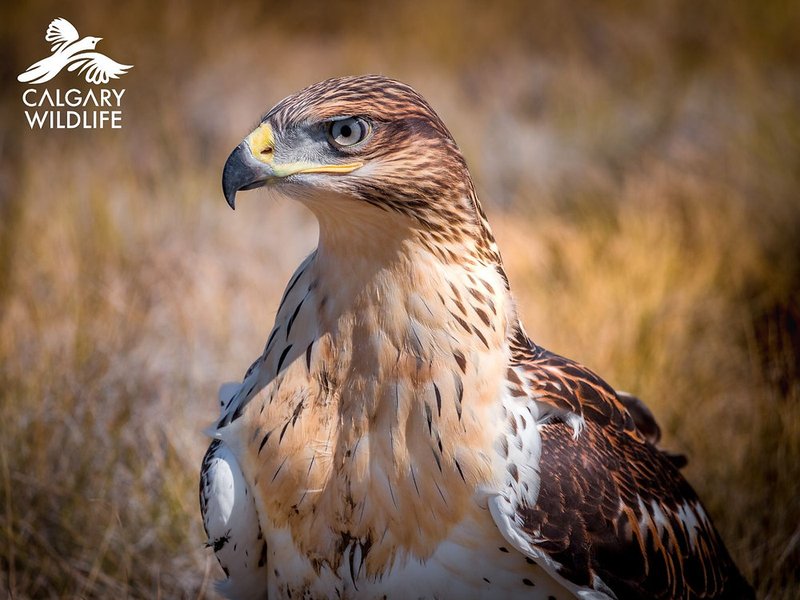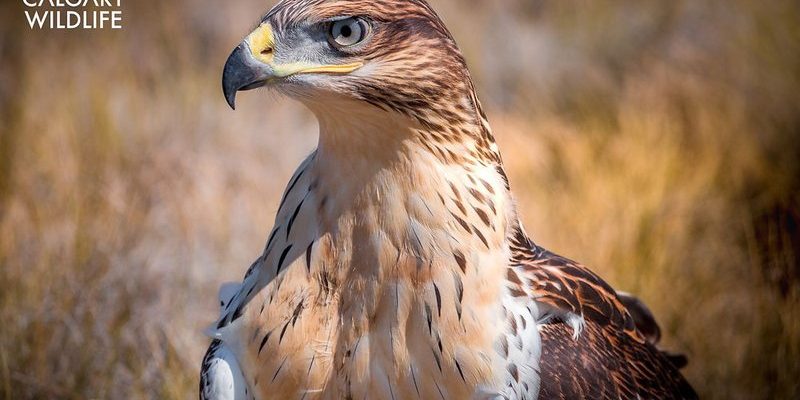
Imagine you’re sitting with a friend over coffee, discussing the wonders of nature. You mention hawks, and they immediately think of the tiny Cooper’s Hawk or the sleek Red-tailed Hawk. You smile and say, “Wait until you hear about the Ferruginous Hawk!” It’s like comparing a cozy mug of hot cocoa to a bold espresso; both may be great, but each has its own unique charm. So, let’s explore what makes the Ferruginous Hawk stand out in the avian world.
1. Unique Coloration and Size
One of the first things you’ll notice about the Ferruginous Hawk is its stunning coloration. These birds showcase a mix of brown, white, and rusty red feathers that set them apart from other hawks. The rusty color on their legs and back is particularly striking, lending them their name. Plus, they are the largest hawks in North America, boasting a wingspan of up to four feet. It’s like seeing a big, beautiful blanket spread across the sky when they glide overhead.
Their size isn’t just for show; it helps them hunt effectively. With powerful talons and sharp eyesight, Ferruginous Hawks can spot prey from far above. They typically hunt small mammals like rabbits and rodents, but they’re not picky eaters. You might even catch them going after birds or reptiles when the opportunity arises!
2. Nesting Habits
Ferruginous Hawks are known to be quite the nest builders. They prefer to construct their homes on tall structures, using materials like sticks, grass, and feathers. Here’s the thing: they often use the same nest year after year, adding more materials each time. It’s a bit like redecorating a familiar room in your house, but with a lot more effort!
These nests can be massive, reaching up to five feet in diameter! You can often find them perched high on cliffs, trees, or even man-made structures like windmills. This gives them a great vantage point to spot potential threats and, of course, their next meal.
3. Migration Patterns
Ferruginous Hawks are partially migratory, which means not all of them migrate. Some birds will fly south during the winter months in search of warmer climates and more abundant food supplies. Imagine planning a vacation to escape the cold; that’s somewhat similar to what these hawks do!
Their migration routes vary depending on their breeding locations. For example, those nesting in northern areas like Canada might head as far south as Texas for the winter. However, some might choose to stay put if food is available and the weather isn’t too harsh. This flexibility is key to their survival!
4. Hunting Techniques
When it comes to hunting, Ferruginous Hawks have a few tricks up their sleeves. They typically use a two-pronged approach: either soaring high in the sky or hunting from a perch. From these vantage points, they can spot movement on the ground, almost like a detective solving a mystery.
Once they identify potential prey, they swoop down with incredible speed and precision. Their keen eyesight allows them to detect even the slightest movement, making them effective hunters. You might think of them as nature’s version of the ultimate sniper, waiting patiently for the perfect moment to strike.
5. Role in Ecosystem
Ferruginous Hawks play a critical role in their ecosystem, acting as natural pest controllers. By keeping populations of small mammals in check, these hawks help maintain balance within their environment. If you think of the ecosystem as a well-tuned engine, Ferruginous Hawks are a key part of that machinery.
Their presence can even influence the behavior of prey species. When hawks are around, rodents tend to be more cautious, altering their movements and habits. So, not only do these birds benefit from their hunting, but they also help other animals adapt and thrive in their habitats.
6. Vocalizations
If you’ve ever heard a hawk call, you know it’s a sound that can send chills down your spine. Ferruginous Hawks have a distinct set of vocalizations that are quite different from their smaller cousins. Their calls are deep and resonant, often described as a series of hoarse “kak-kak-kaks”.
These vocalizations serve various purposes, from marking territory to communicating with their mates. Imagine a couple having a conversation across a crowded room; a Ferruginous Hawk’s call is their way of cutting through the noise to reach each other. It’s fascinating how their sounds can convey so much meaning!
7. Conservation Status
Unfortunately, Ferruginous Hawks face challenges due to habitat loss and environmental changes. As farmland expands and natural areas shrink, their nesting sites become fewer and fewer. You might wonder why it matters—after all, it’s just one bird, right? But remember, they’re part of a larger ecosystem that relies on a variety of species to thrive.
Efforts are underway to protect their habitats and ensure that they continue to grace our skies. Conservationists are working hard to create suitable environments and promote awareness about the importance of these incredible birds. Just like every piece of a puzzle is essential for the whole picture, every species, including the Ferruginous Hawk, plays a vital role in our natural world.
8. Threats and Predation
Like many birds of prey, Ferruginous Hawks have their own set of natural enemies. While they are powerful hunters, they can fall victim to larger birds, such as eagles or owls. Think of it as the food chain balancing itself out; bigger birds occasionally target them when food is scarce.
Additionally, human activities can pose a threat. Collisions with vehicles and habitat disturbance can lead to injury or death. Awareness and education are essential to minimize these impacts, allowing us to coexist with these magnificent raptors.
9. Lifespan and Reproduction
Ferruginous Hawks typically have a lifespan of about 10 to 15 years in the wild. During breeding season, they can lay anywhere from one to six eggs, depending on factors like food availability and habitat. The female is primarily responsible for incubating the eggs, while the male takes on the role of hunter, bringing food back to the nest.
Once the chicks hatch, both parents are involved in their care. It’s a team effort similar to how a family operates, with each member playing a unique role to ensure survival. This nurturing behavior highlights the bond between the parents and the importance of collaboration in nature.
10. Fascination with Ferruginous Hawks
It’s no wonder why bird watchers and nature enthusiasts are captivated by Ferruginous Hawks. Their striking appearance and impressive hunting skills make them a favorite among raptor fans. Plus, they’re relatively easy to spot in open areas, especially during migration seasons.
If you ever have the chance to observe them in the wild, take a moment to appreciate their grace and power. Whether gliding through the air or perched high on a branch, Ferruginous Hawks remind us of the beauty and complexity of nature. Just like that cozy coffee chat, their stories are waiting to be discovered and shared.
In conclusion, the Ferruginous Hawk is not just another bird; it’s a fascinating creature with a rich history and essential role in our ecosystem. From their striking coloration to their unique hunting techniques, these majestic hawks are a true testament to the wonders of wildlife. So, the next time you find yourself outdoors, keep an eye out for these incredible raptors—you might just spot a Ferruginous Hawk soaring above!

